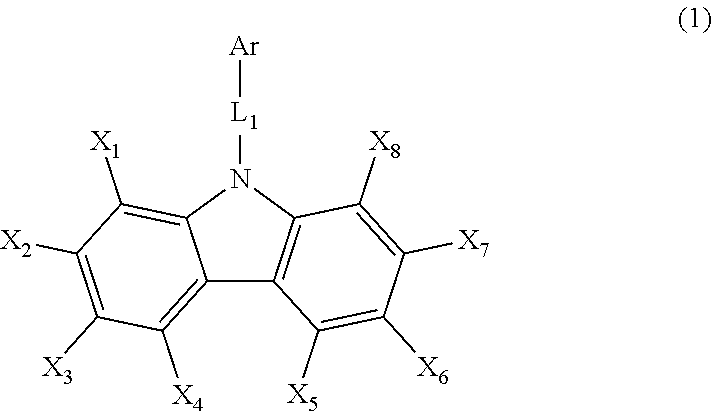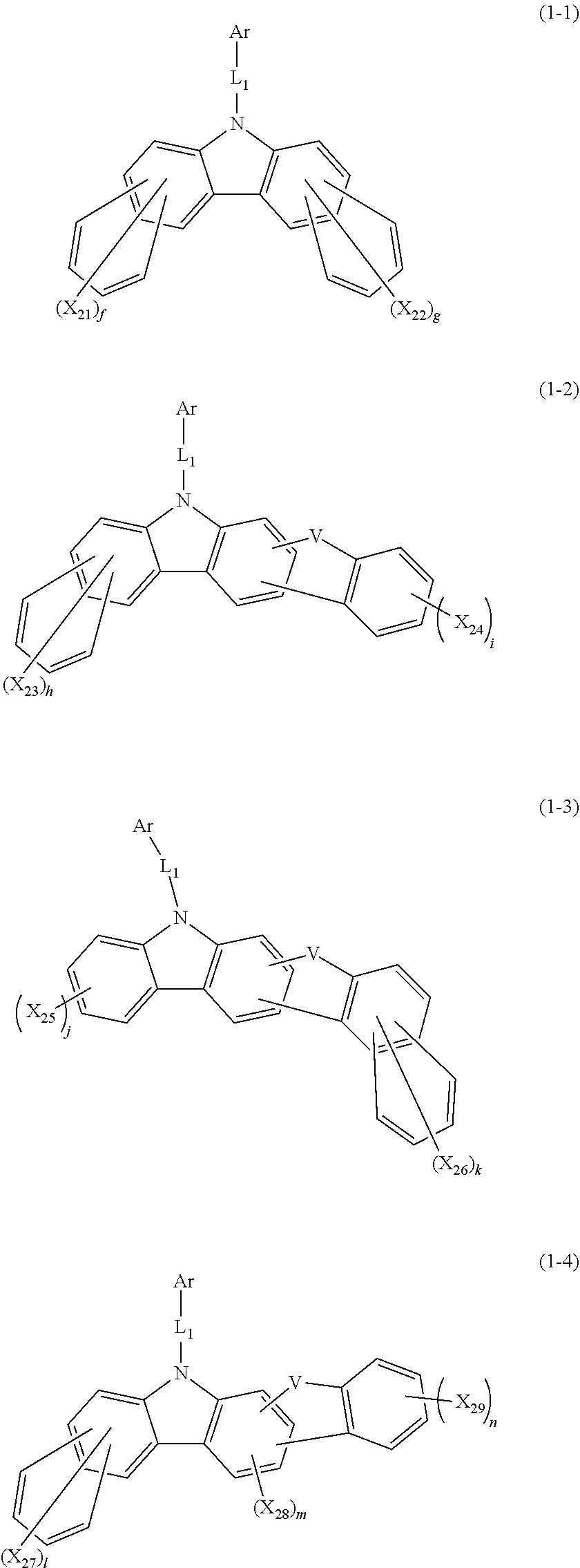Plurality of host materials and organic electroluminescent device comprising the same
a technology of organic electroluminescent devices and host materials, which is applied in the direction of basic electric elements, electrical apparatus, and semiconductor devices, to achieve the effect of limiting the scope of disclosure and improving lifetime properties
- Summary
- Abstract
- Description
- Claims
- Application Information
AI Technical Summary
Benefits of technology
Problems solved by technology
Method used
Image
Examples
example 1
on of Compound C2-53
[0076]
[0077]8.0 g of compound aa (26.4 mmol), 8.85 g of N-([1,1′-biphenyl]-4-yl)dibenzo[b,d]furan-3-amine (26.4 mmol), 1.21 g of Pd2(dba)3 (1.32 mmol), 1.08 g of SPhos (2.64 mmol), and 3.81 g of NaOtBu (39.6 mmol) were added to 140 mL of o-xylene, and the mixture was stirred under reflux for 5 hours. After completion of the reaction, the reaction mixture was cooled to room temperature, and then filtered through silica gel. The organic layer was distilled under reduced pressure, and then recrystallized with toluene to obtain 5.0 g of compound C2-53 (yield: 31%).
MWM.P.C2-53601.7250° C.
example 2
on of Compound C2-54
[0078]
[0079]7 g of compound aa (23.15 mmol), 7.8 g of N-([1,1′-biphenyl]-4-yl)dibenzo[b,d]furan-2-amine (23.15 mmol), 0.26 g of Pd(OAc)2 (1.158 mmol), 0.47 g of P(t-Bu)3 (2.3 mmol), and 4.4 g of sodium tert-butoxide (46.3 mmol) were dissolved in 115 mL of o-xylene, and the mixture was stirred under reflux for 2 hours. After completion of the reaction, an organic layer was extracted with ethyl acetate, and then separated by column chromatography to obtain 3 g of compound C2-54 (yield: 21%).
MWM.P.C2-54601.69215° C.
example 3
on of Compound C2-46
[0080]
[0081]In a flask, 5.0 g of compound aa (16.5 mmol), 5.3 g of di([1,1′-biphenyl]-4-yl)amine (16.5 mmol), 0.19 g of Pd(OAc)2 (0.83 mmol), 0.82 mL of P(t-Bu)3 (1.65 mmol), and 3.2 g of NaOtBu (33.0 mmol) were dissolved in 83 mL of o-xylene, and the mixture was stirred under reflux for 3 hours. After completion of the reaction, an organic layer was extracted with ethyl acetate, and then separated by column chromatography to obtain 3 g of compound C2-46 (yield: 30%).
MWM.P.C2-46587.71237° C.
PUM
| Property | Measurement | Unit |
|---|---|---|
| thickness | aaaaa | aaaaa |
| thickness | aaaaa | aaaaa |
| thickness | aaaaa | aaaaa |
Abstract
Description
Claims
Application Information
 Login to View More
Login to View More - R&D
- Intellectual Property
- Life Sciences
- Materials
- Tech Scout
- Unparalleled Data Quality
- Higher Quality Content
- 60% Fewer Hallucinations
Browse by: Latest US Patents, China's latest patents, Technical Efficacy Thesaurus, Application Domain, Technology Topic, Popular Technical Reports.
© 2025 PatSnap. All rights reserved.Legal|Privacy policy|Modern Slavery Act Transparency Statement|Sitemap|About US| Contact US: help@patsnap.com



